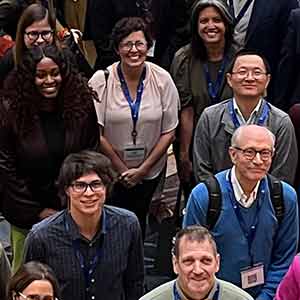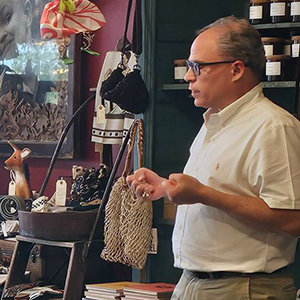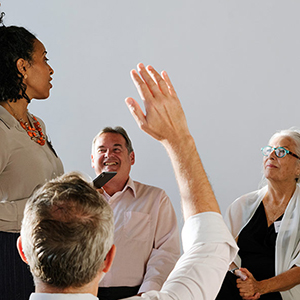Nearly 150 researchers, communicators, and public health professionals gathered at the annual Partnerships for Environmental Public Health (PEPH) meeting, held Dec. 13-14 at NIEHS. The meeting’s focus, Reporting Back Research Results, reflected a critical need to ensure that individuals and communities that are part of a research study have access to their data and information on what it means for their health.
“This year’s meeting is on a really important topic,” said Gwen Collman, Ph.D., director of the Division of Extramural Research and Training at NIEHS. “Reporting back research results wasn’t a thing 10 or 20 years ago. It wasn’t a thing when I was a grad student doing epidemiological studies, or when I started here at NIEHS. This meeting is about having a collective conversation on this topic so that we can continue to advance and promote this approach from an environmental health science perspective.”
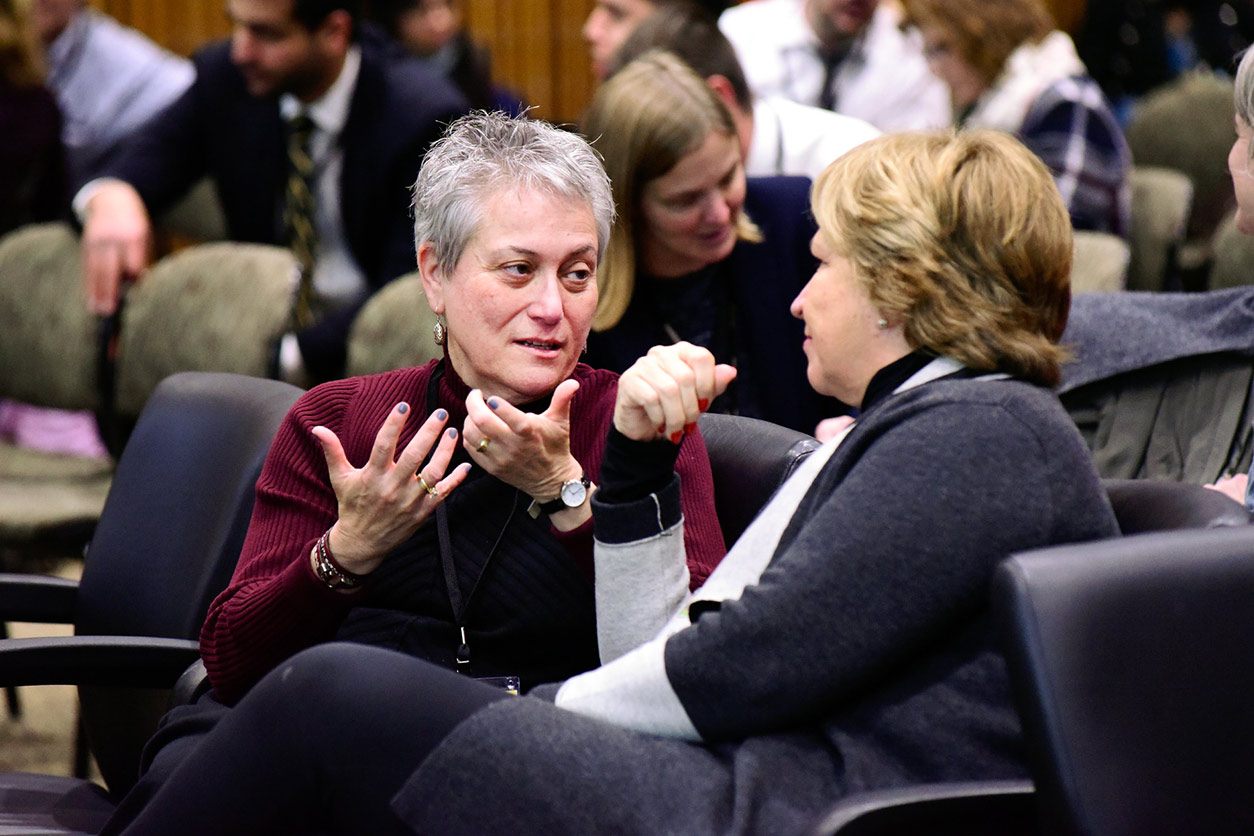 Collman and Linda McCauley, Ph.D., from Emory University, discussed implications of reporting back from the researcher’s perspective. (Photo courtesy of Steve McCaw)
Collman and Linda McCauley, Ph.D., from Emory University, discussed implications of reporting back from the researcher’s perspective. (Photo courtesy of Steve McCaw)As a way to generate that conversation, Liam O’Fallon, program director for PEPH, challenged the audience. “Take 30 seconds and really reflect on why reporting back research results is important to you,” he challenged them.
Historical perspective on reporting back
“I’m guessing that [you] chose to come to the meeting because you already think giving people their results in environmental studies is a good idea,” said Julia Brody, Ph.D., executive director of the Silent Spring Institute. “So why do we report back?” She answered the question with several reasons.
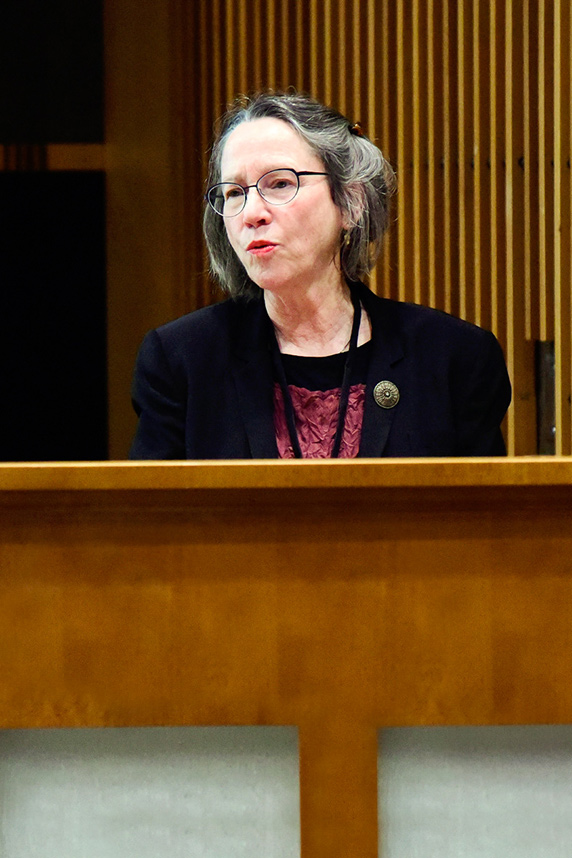 “Pollution is personal,” said Brody. “Chemicals [associated with] health concerns are in people and come from many different kinds of sources, and people have a right to know what those sources are.” (Photo courtesy of Steve McCaw)
“Pollution is personal,” said Brody. “Chemicals [associated with] health concerns are in people and come from many different kinds of sources, and people have a right to know what those sources are.” (Photo courtesy of Steve McCaw)- Reporting back results is the right thing to do and builds trust between researchers and community partners.
- Reporting back can also be a source of learning for both researchers and the scientists.
- Reporting back can help to identify next steps, such as installing water filters or switching to nontoxic cleaning products, that can promote health in the communities studied.
The Silent Spring Institute was founded to answer the question of which environmental factors were influencing breast cancer risk in Cape Cod, Massachusetts, Brody explained. Levels of breast cancer were rising in that area.
The group started a household exposure study to find out whether toxins in the home might be linked to this increase. Soon after, participants began phoning in to ask when they would get their results.
That got the researchers thinking about reporting back results, a process that was not in their original protocol. “The idea is that knowledge is power,” Brody said. “People wanted to receive results, and they can understand them.”
She added that empowering people with knowledge makes them research partners. “People do use our results,” Brody affirmed. “They use them to make personal choices about their lifestyles.”
Who are the partners?
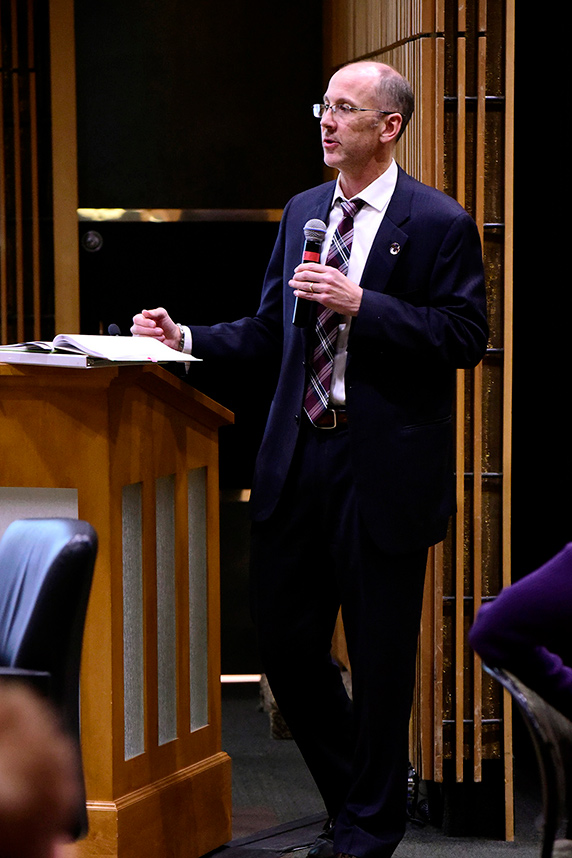 O’Fallon addressed the crowd at the annual PEPH meeting held at NIEHS in the Rodbell Auditorium on Dec. 13-14. (Photo courtesy of Steve McCaw)
O’Fallon addressed the crowd at the annual PEPH meeting held at NIEHS in the Rodbell Auditorium on Dec. 13-14. (Photo courtesy of Steve McCaw)A variety of presenters shared their perspectives on the roles and expectations of partners in reporting back. Marilyn Howarth, M.D., from the University of Pennsylvania, described it best. “Report back is a team sport,” she said. “Community, researchers, media, medical professionals, public health professions, individuals, community engagement cores are all part of this process.”
After a successful day half filled with speakers and stories from their experiences, O’Fallon finished with a summary of the whys, hows, and the importance of reporting back research results.
“The bottom line is that we really must meet the community needs,” he said. “So, going forward, what’s next? This is something we need to be thinking about after the meeting. How do we build off of what we’ve shared, and what we’ve started today?”
(Sheena Scruggs, Ph.D., is Digital Outreach Coordinator in the NIEHS Office of Communications and Public Liaison.)
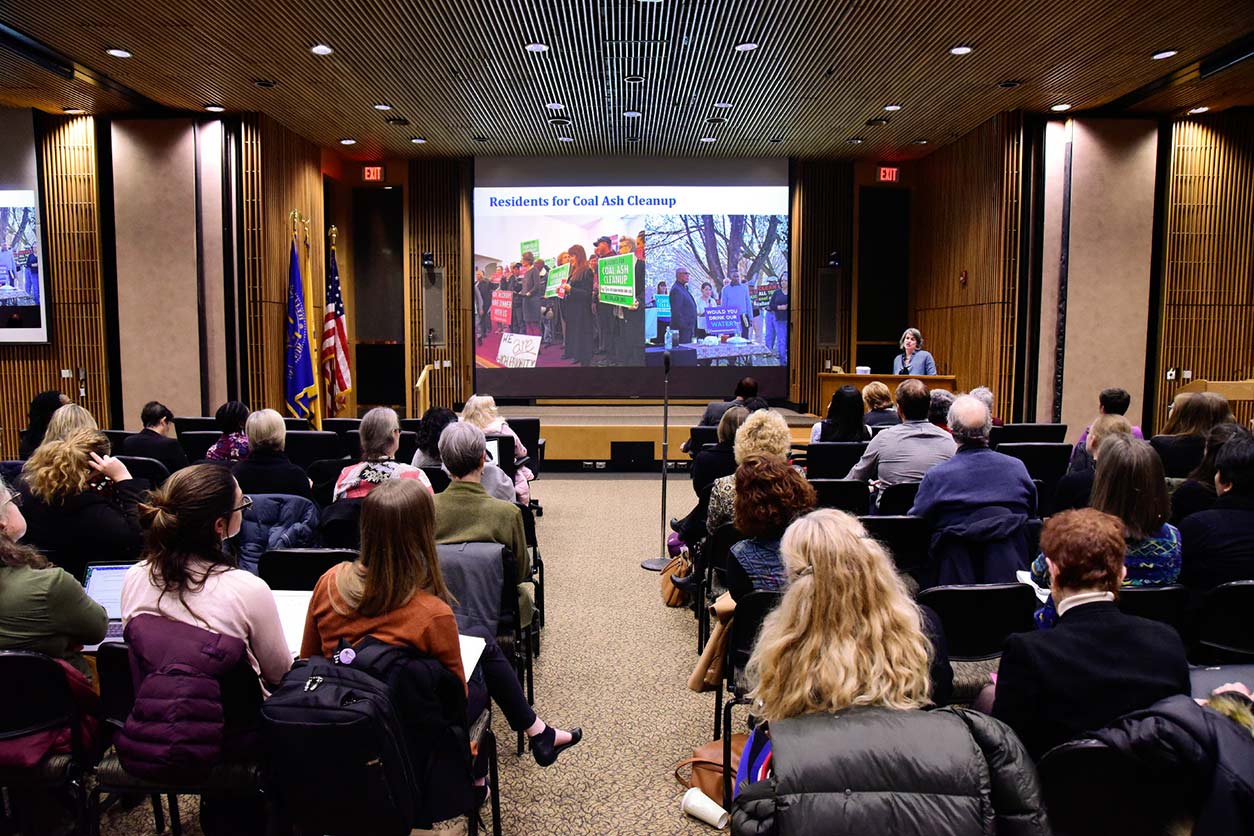
Armijo, community partner for the Well Empowered Study in North Carolina, described what reporting back research results means to her.





